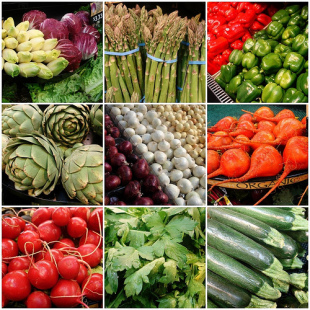Packing Healthy Snacks for the Beach
 Wednesday, June 30, 2010 at 03:28AM
Wednesday, June 30, 2010 at 03:28AM  image via i stockSummer is finally here and it's time to hit the beach. But summer doesn't give us the right to eat poorly. It's important to stay healthy all year round. Relaxing at the beach is a great way to spend the day, but make sure you bring some healthy treats to share.
image via i stockSummer is finally here and it's time to hit the beach. But summer doesn't give us the right to eat poorly. It's important to stay healthy all year round. Relaxing at the beach is a great way to spend the day, but make sure you bring some healthy treats to share.
Before you set out for a day at the beach, it's always smart to plan ahead and pack some yummy food to bring along. Instead of bringing junk food, this year try something new and healthy. I love to freeze different foods the night before my beach escape. Frozen fruits, like grapes and blueberries, are especially refreshing in the heat, taste great, and provide you with healthy nutrients. Freezing yogurt the night before can also make for a great beach snack. By the time you're ready to eat, the yogurt won't be frozen but will be nice and cold. You can also bring along some granola or make your own trail mix. These snacks provide energy and can be added to the yogurt and fruit to make your own parfait. Try to avoid salty foods though, like salted pretzels or salted nuts. It's important to stay hydrated and keep your energy level up when spending the day in the sun. Salty foods will do just the opposite by dehydrating you. Foods like fruit and veggies are high in water content which will provide you with a little extra hydration. Making sure you have lots of water is extremely important as well. For those who don't love to drink plain water, bring along some flavor packets to keep everyone happy. Drinking is the key to making it through a day at the beach and in the sun.
Plan on eating a meal at the beach? Don't spend all your money on greasy cheeseburgers and pizza; instead, bring a healthy lunch that everyone will enjoy. Reduced fat peanut butter and cut up apple pieces on a whole-wheat sandwich will be popular, especially with the kids. Besides being easy to prepare, the peanut butter will provide some protein and the apples will add some extra water content. To make the sandwich even more enticing for the kids, try putting the peanut butter and apples in small whole-wheat tortillas to make eating more fun. It tastes extra-yummy when the peanut butter melts in the sun and gets all gooey. Don't forget extra napkins! Feel free to add some of that granola or some banana. Making a normal sandwich into a wrap not only makes eating more exciting but also makes them cleaner; wraps are easier to hold so you don't have to worry about your sandwich contents falling into the sand.
If your kids insist on eating at the snack bar, let them choose between a grilled chicken sandwich and grilled chicken fingers. Most snack bars will be happy to substitute grilled chicken for the fried chicken on the kids' menu. Forego the fries and get baked potato chips instead. If your kids are clamoring for the ice cream truck, have them choose ices over ice cream for a lot less fat.
With all these healthy choices, everyone will be satisfied and you are guaranteed to enjoy a great day at the beach. Your friends and family with thank you, as will your body. And don't forget the sunscreen.
 Be Well,
Be Well,

Red Light, Green Light, Eat Right
 healthy children in
healthy children in  Dr. Joanna Dolgoff
Dr. Joanna Dolgoff 















